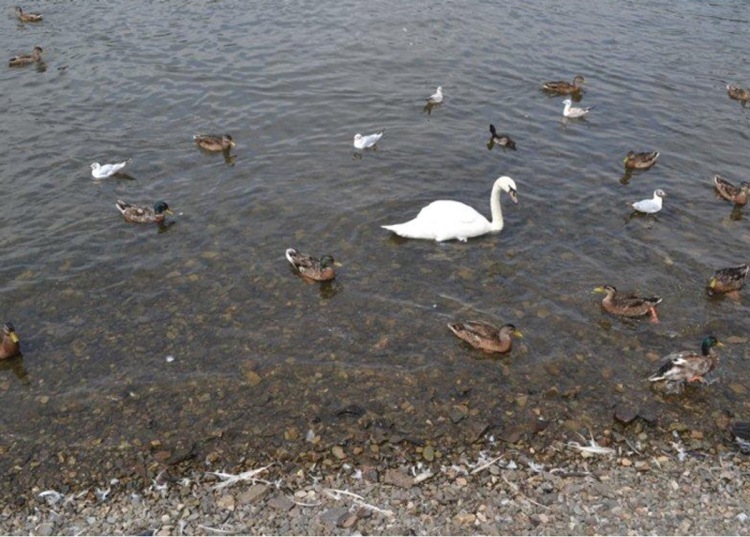In Summary
- Some fresh produce growers abstract water and store for growing seasons, proper water storage can help improve quality.
- Improper water storage includes water which is stored inappropriately in unfenced reservoirs, open to the sky. In these storage circumstances there are risks of surface run off from land used to farm livestock and direct contamination by wildlife and livestock.
- Research has found that some pathogen levels (e.g. Campylobacter) in stored water does not lead to increased infection, whilst others (e.g. Cryptosporidium) are strongly connected.
- Rainfall has been identified as a large risk factor to water quality, likely due to run-off from rainwater being contaminated by microbes as it flows into water systems.
- Frequent cleaning or replacement of water storage containers can help mitigate these risks. In addition, use of suspended shade cloth covers on exposed water reservoirs can lead to significant reductions of bacteria, and overall water quality.
Water use and quality play a large role in food contamination at all levels of the production process. Enhanced management of water use and resulting enhanced water quality levels will have large positive impacts on reducing the incidence of food contamination (Jawar and Ringler, 2009). The fresh produce industry in the UK routinely abstracts water from rivers during the winter months where precipitation is highest, and stores it in reservoirs or tanks for use during the spring and summer growing seasons. Water storage is not an inherently bad practice. In fact, under optimal storage conditions, the microbial indicator and pathogen load associated with highly contaminated water can fall significantly (Barbagallo et al., 2003). Many water companies consider storage a low-tech primary treatment. Furthermore, there are reports that managing surface streams and rivers by the installation of periodic reservoirs to hold back water is a beneficial practice; again, if the water is contaminated (Gannon et al. 2005). However, many of the detrimental factors already discussed for surface waters, such as rivers, apply if the water is stored inappropriately in unfenced reservoirs which are open to the sky. The primary concerns are surface run off from land used to farm livestock and direct contamination by livestock and wildlife (including birds and insects).

Given the importance of wildlife and livestock in the contamination of surface and inadequately secured water stores, studies have been undertaken to determine the relative contribution made by zoonotic agents by water transmission. Not surprisingly, the results of these studies are strongly indicative of different pathogen behaviours and different relative contributions to total human foodborne illness by each of the pathogens when carried in water. For example, the most bacterial human foodborne disease in the UK is caused by Campylobacter jejuni. A survey in England involved a 10km by 10km plot of land in Cheshire. Water and environment samples such as soil and foliage were tested for Campylobacter (Brown et al., 2004). C. jejuni was the most prevalent species in all animal faecal samples, ranging from 11% in samples from non-avian wildlife to 36% in cattle faeces. It was already widely reported that birds are carriers for Campylobacter transmission, including migratory birds (Kapperud and Roseff, 1983). In the Cheshire study, C. jejuni was isolated from 15% of all surface water samples tested. Over the period that the study ran, fluctuations in Campylobacter detections did not correlate with human illness, leading the study authors to conclude that "The observed pattern is not consistent with large-scale transmission [of Campylobacter] attributable to watercourses". A later study by Smith et al. (2006) confirmed the low contribution made by water to human food borne illness when considering Campylobacter. In contrast to Campylobacter however, Smith report that Cryptosporidium carried in water (including mains water, private supplies and surface water) was implicated in 69% of all disease outbreaks of cryptosporidiosis.
There have been an increasing body of information that supports rainfall events as causing increases in the bacterial load of stored rainwater (Martin et al. 2010; Kaushik et al. 2014; Lee et al. 2020; Lizaga et al. 2020). The exact mechanism operating is unclear since fresh rainwater typically has very low bacterial numbers. One likely explanation for the Australian observation is that the rainfall collection surfaces were not clean, and contamination was washed into the water store as the rain washed across dirty collection surfaces. Alternatively, over time, dust and soil are washed into water stores where they accumulate as sediment. If vigorous enough, further additions of water can disturb sediment releasing nutrients and trapped bacteria causing increases to bacterial load in the short term. Periodic cleaning (or replacement of butyl liners) for small volume storage tanks (up to 50,000 litres) in combination with a microbiological testing regime can be beneficial in preventing the build up of sediment and microbial load in small water stores.
Maestre-Valero et al. (2013) investigated the effect of using suspended shade cloth covers (SSCCs) on water quality irrigation water reservoirs. Four water stores in Spain were monitored for a year. Two stores were covered with a black polyethylene SSCC, whereas the two others remained uncovered during the trial. A key finding of the study was the SSCC dramatically reduced photosynthesis activity in the water, reducing algal bloom. Use of a cover caused a reduction of 82% in Escherichia coli and faecal coliforms, because the organic matter in the water (algae) was reduced and also because of the lower water temperature. In warm countries, covering stores had a significant improvement in stored irrigation water quality.
References
(click a reference to read it (where it's available); some require purchase from the publisher)